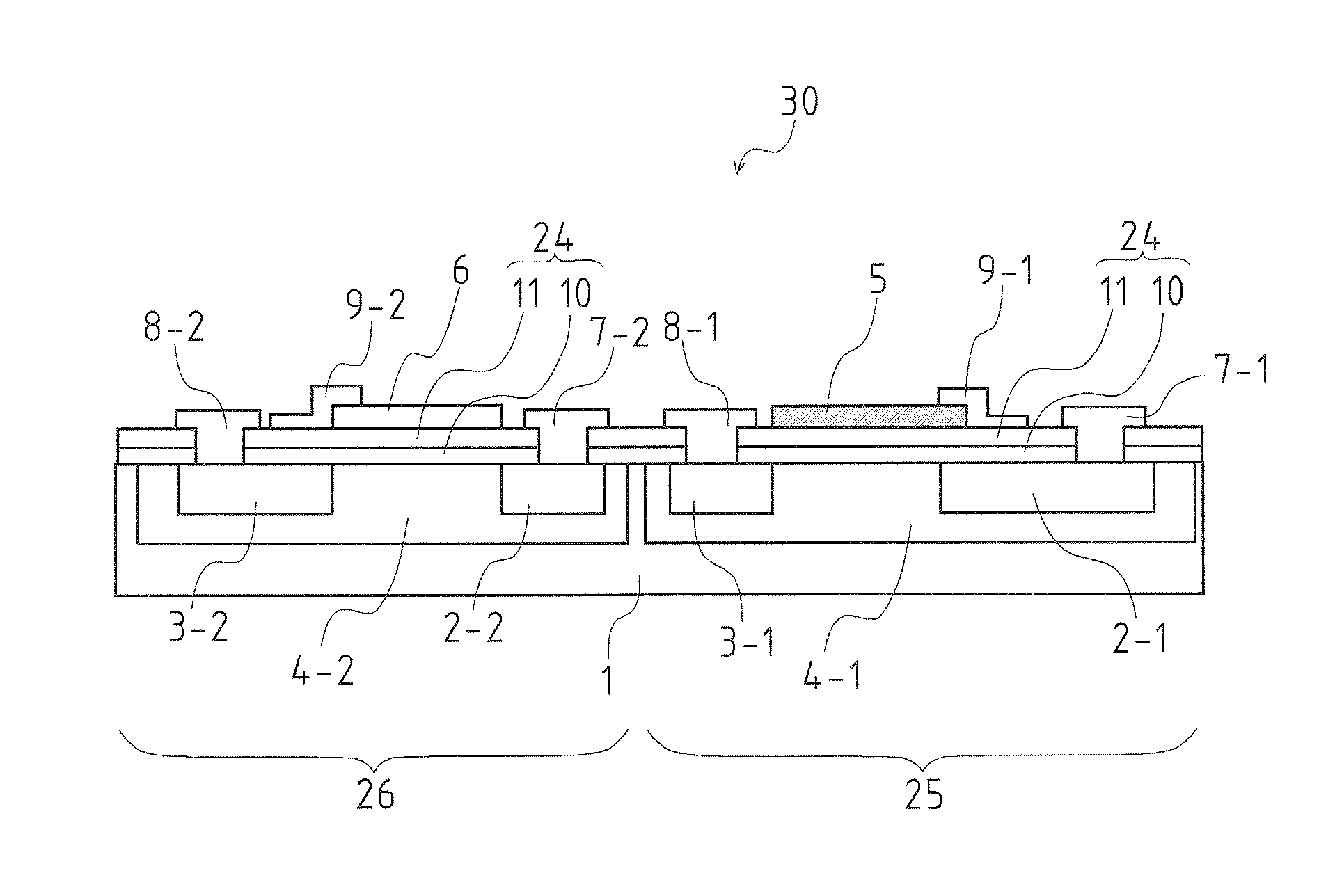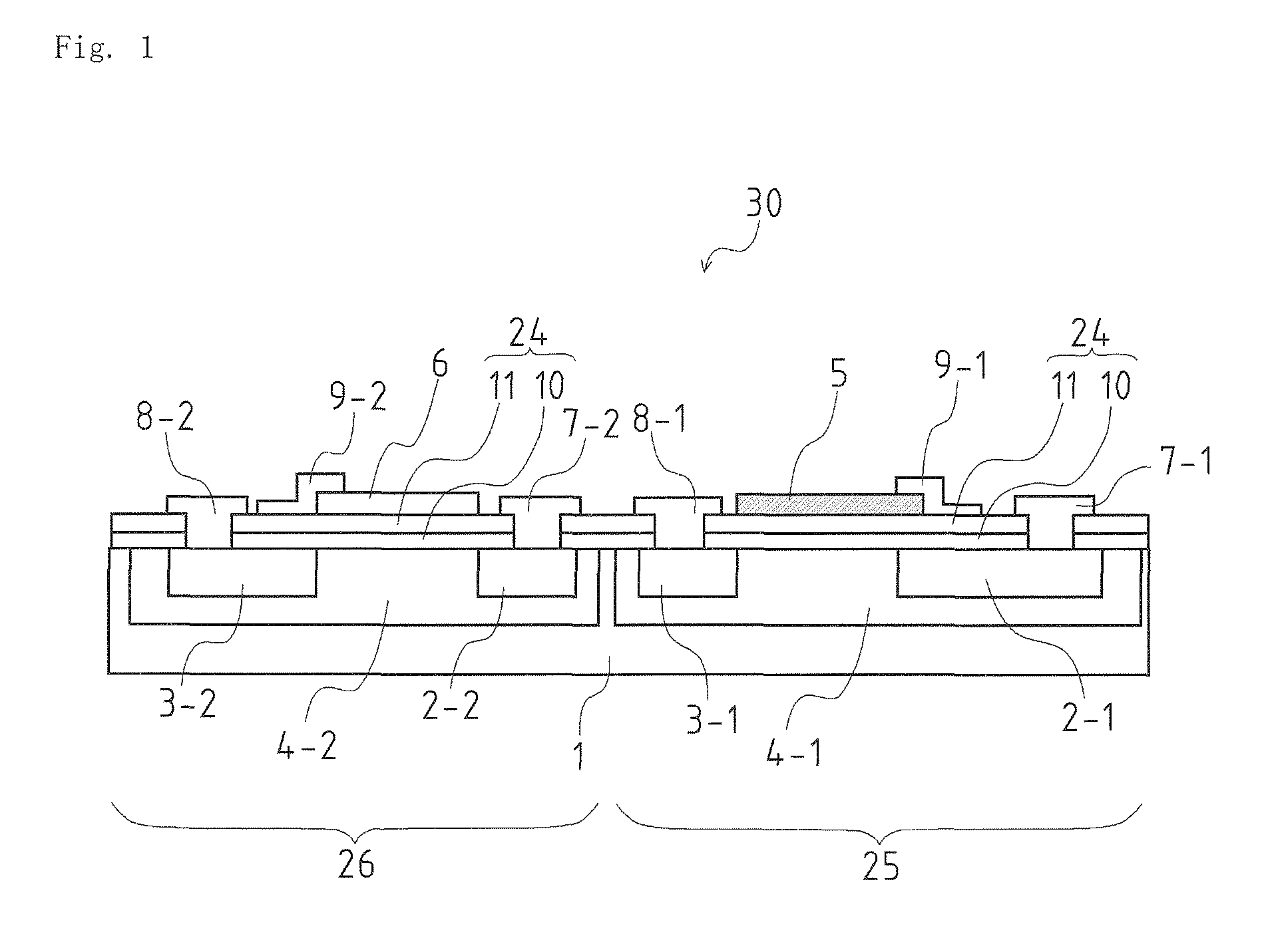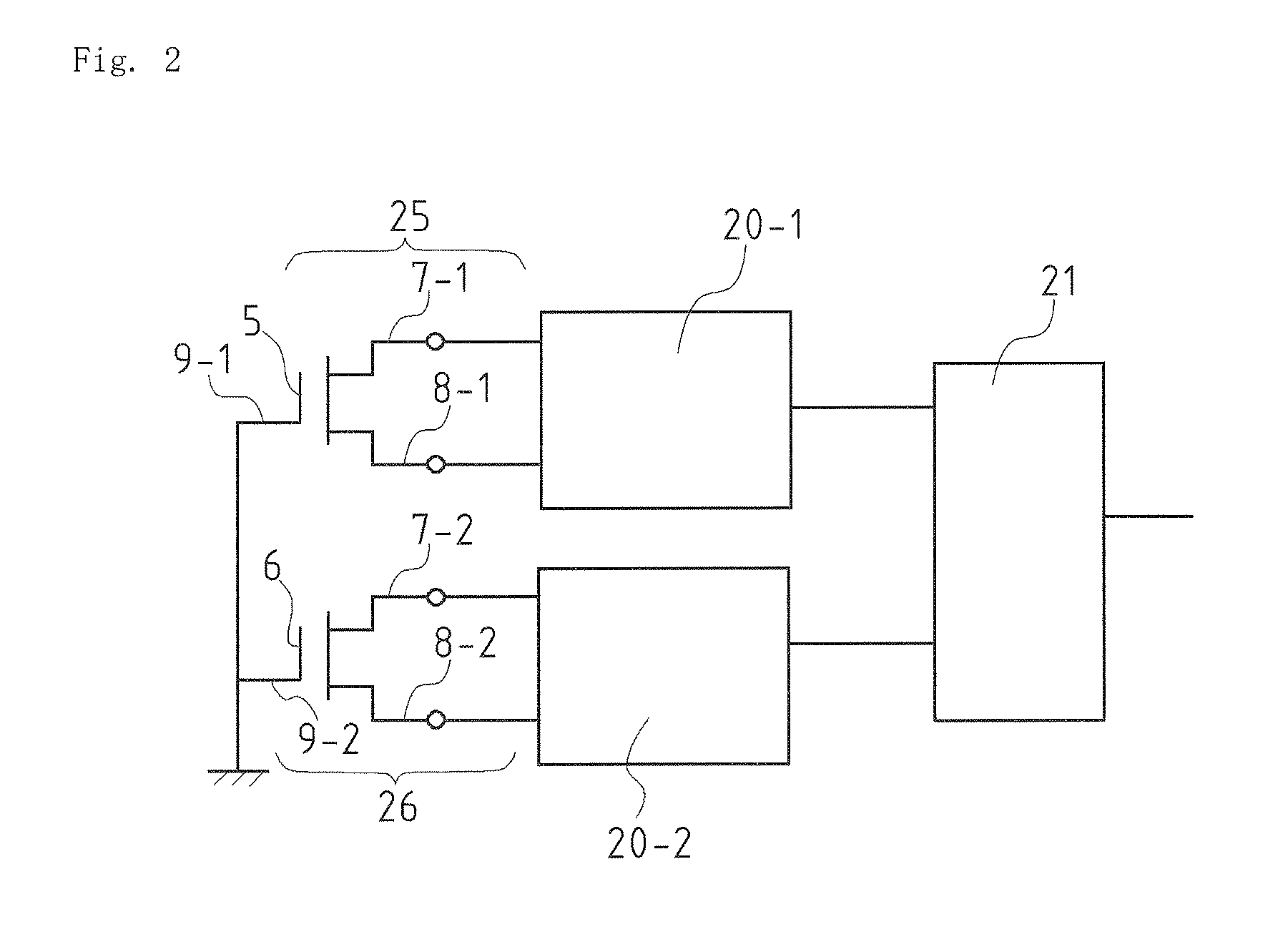Gas sensor
a technology of gas sensor and sensor, applied in the field of gas sensor, can solve the problems of long-term drift of sensor output, difficult to determine whether a change in sensor output is a response, and difficult to determine whether a gas sensor is not responding, so as to eliminate the change in output, stabilize the reaction, and respond differently.
- Summary
- Abstract
- Description
- Claims
- Application Information
AI Technical Summary
Benefits of technology
Problems solved by technology
Method used
Image
Examples
embodiment 1
[Embodiment 1]
[0053]FIG. 1 is a schematic cross-sectional view of a gas sensor according to an embodiment of the present invention, illustrating a basic structure of the gas sensor including two field-effect transistors, A gas sensor 30 illustrated in FIG. 1 is a field-effect gas sensor in which two field-effect transistors using mutually different metal materials as gate electrodes are integrated on one Si substrate 1. That is, the gas sensor 30 includes two n-type channel field-effect transistors provided on the Si substrate 1.
[0054]A catalytic metal gate field-effect transistor 25 (hereinafter referred to as catalytic metal gate transistor), which is one of the two field-effect transistors, includes a Pt gate electrode 5 formed as a first gate electrode. Using Pt (platinum), which is an example of catalytic metal, as a gate electrode material of the first gate electrode, the catalytic metal gate transistor 25 functions as a gas sensor to respond to hydrogen. Hydrogen, when expose...
embodiment 2
[Embodiment 2]
[0064]FIG. 5 shows an alternating-current source 23 serving as voltage applying means added to the gas measuring circuit in FIG. 3. The alternating-current source 23 applies an alternating-current voltage ΔAC commonly to the two field-effect transistors, namely, the catalytic metal gate transistor 25 and the non-catalytic metal gate transistor 26. This signal, i.e., the alternating-current voltage ΔAC, and alternating-current components ΔAC1 and ΔAC2 of outputs of the two field-effect transistors have the relationship ΔAC1=ΔAC2=ΔAC during normal operation of the two field-effect transistors. Therefore, the alternating-current voltage signal does not exist in the output difference of the differential amplifier 21. However, if either of the two field-effect transistors breaks down, the broken field-effect transistor shows no alternating-current voltage signal in its output or shows a different level of alternating-current voltage signal to result in ΔAC1≠ΔAC2. The differ...
embodiment 3
[Embodiment 3]
[0070]FIG. 6 is a schematic view of the gas sensor 30 including the two field effect transistors according to an embodiment of the present invention, illustrating a basic structure of a sensor chip plane having a common ion conductive film formed on the gate electrodes. In order to couple the gas sensor 30 to an external measuring circuit (not shown), a drain electrode pad 27, a source electrode pad 28, and a gate wiring electrode pad 29 of the catalytic metal gate transistor 25, and a drain electrode pad 31, a source electrode pad 32, and a gate wiring electrode pad 33 of the non-catalytic metal gate transistor 26 are provided adjacent to the chip of the gas sensor 30. The Pt gate electrode 5 and the Ti gate electrode 6 is covered with a common ion conductive film 12. The common ion conductive film 12 in the present embodiment is a perfluoro-ion-exchange film having proton conductivity. The perfluoro-ion-exchange film having proton conductivity selectively allows prot...
PUM
| Property | Measurement | Unit |
|---|---|---|
| operating temperatures | aaaaa | aaaaa |
| dissociation response | aaaaa | aaaaa |
| direct-current voltage | aaaaa | aaaaa |
Abstract
Description
Claims
Application Information
 Login to View More
Login to View More - R&D
- Intellectual Property
- Life Sciences
- Materials
- Tech Scout
- Unparalleled Data Quality
- Higher Quality Content
- 60% Fewer Hallucinations
Browse by: Latest US Patents, China's latest patents, Technical Efficacy Thesaurus, Application Domain, Technology Topic, Popular Technical Reports.
© 2025 PatSnap. All rights reserved.Legal|Privacy policy|Modern Slavery Act Transparency Statement|Sitemap|About US| Contact US: help@patsnap.com



